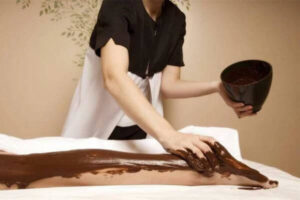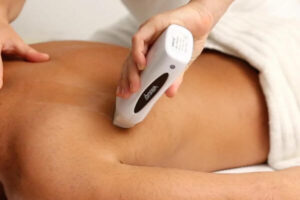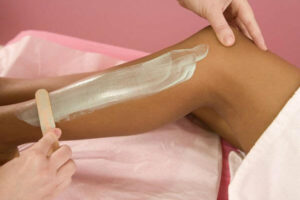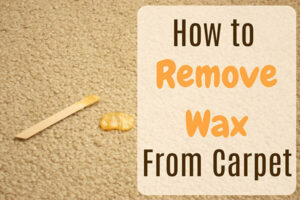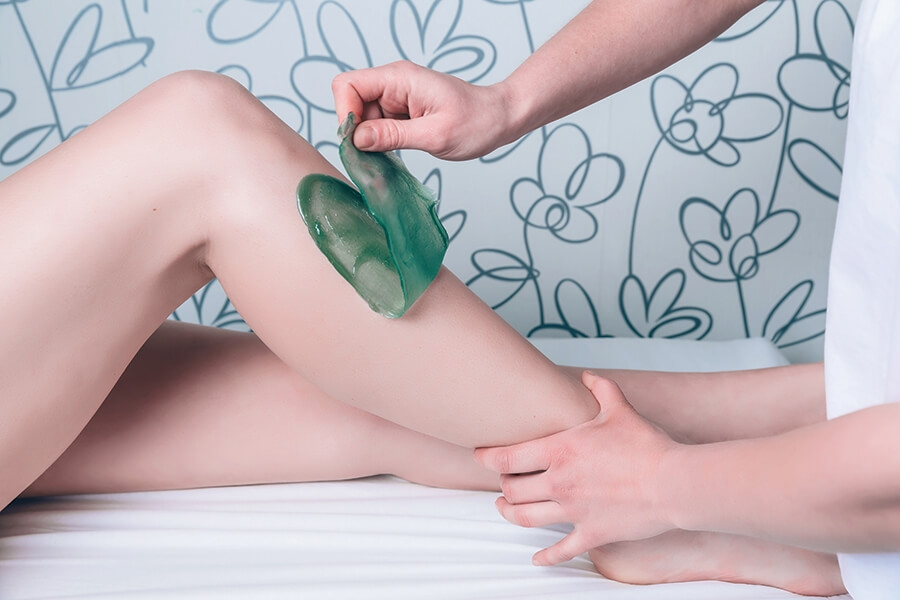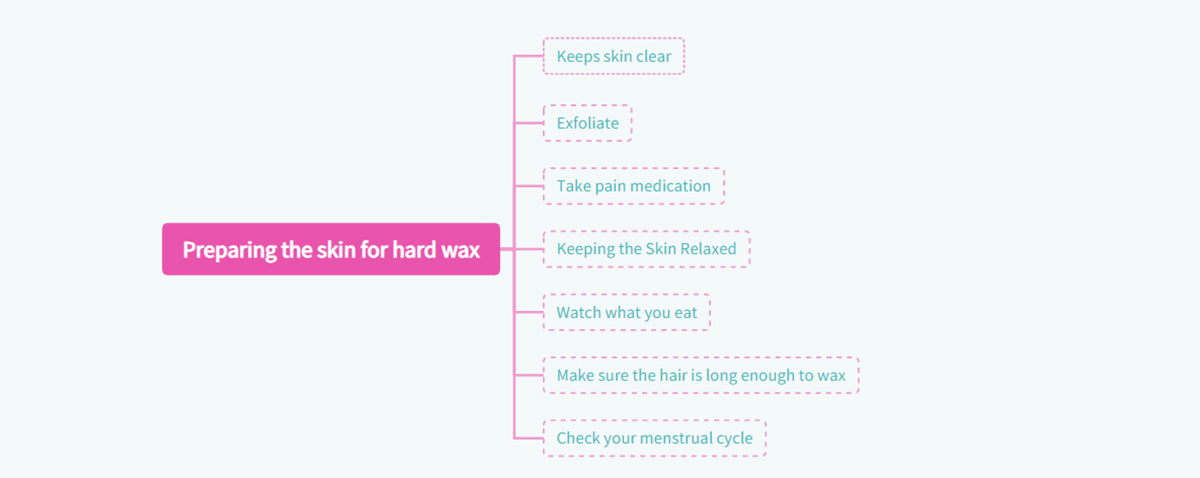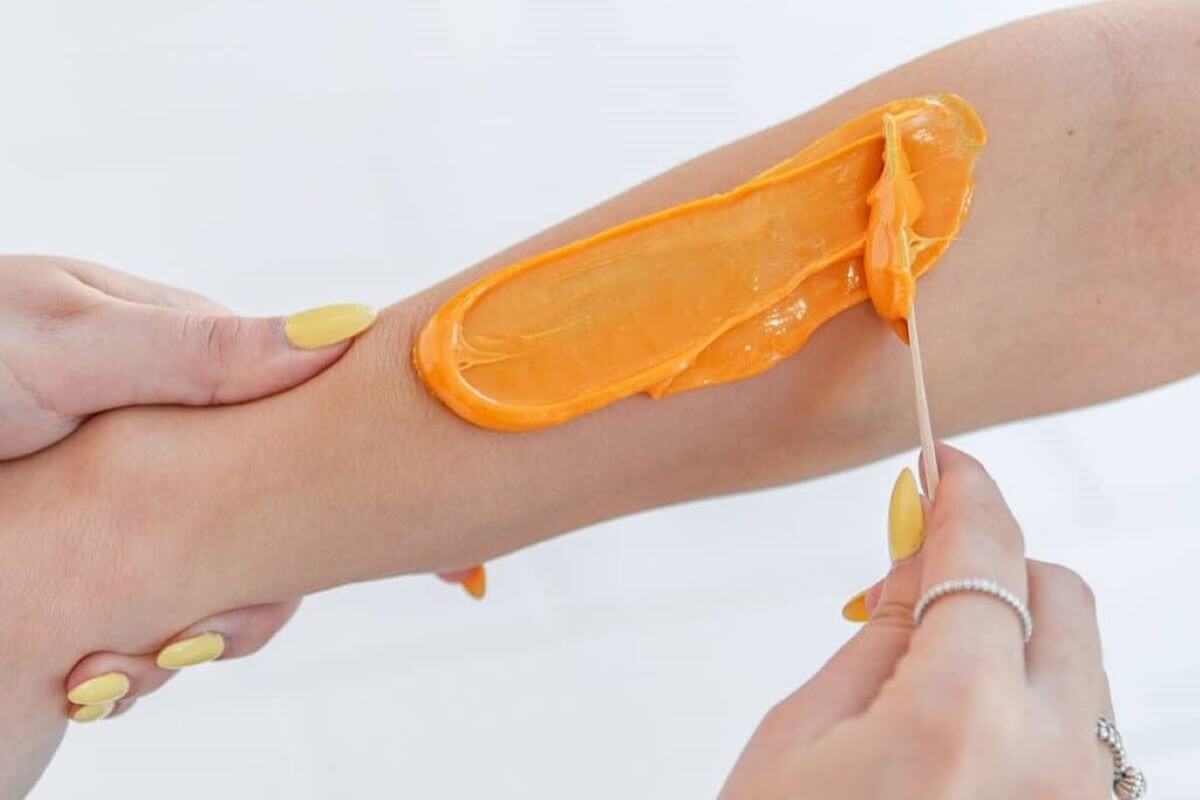Hard wax is the ideal solution for treating sensitive areas of the body without causing too much pain. The beautician applies professional hard wax to areas such as the face and inner thighs to make the skin more receptive to the process, and the results speak for themselves: even in the trickiest areas, the hard wax leaves the skin smooth after all the hair is removed.
1. What is hard wax?
Hard wax is a special type of hair removal wax that hardens on its own after application, eliminating the need for wax strips. Hard wax is known for its strong grip on hair rather than skin, making it ideal for sensitive areas.
2. Benefits of using hard wax
- Enhanced comfort: Less painful than other waxing methods.
- Precision: Great for small, delicate areas like the face or bikini line.
- Effectiveness: Effective for removing shorter, coarse hairs.
- Minimal irritation: Reduces the risk of skin irritation and redness.
3. Preparing the skin for hard wax
Professional waxes are gentler on the skin than homemade waxes. Among them, hard wax enhances all the advantages to ensure a satisfactory procedure in areas of thinner skin. Having said that, any treatment that involves direct skin-to-skin contact always requires some level of preparation. Here are some important instructions that clients should follow before waxing:
- Keeps skin clear: Not surprisingly, waxing should only be done after the area has been properly cleansed, removing all the invisible but pore-clogging specks of dirt. However, soap residue can be a problem, so avoid washing your skin immediately before heading to your waxing appointment.
Wait a few hours after showering, and pay attention to collecting sweat before the session begins. Taking a bath can also help you relax and make your skin more pliable to the wax afterward.
- Exfoliate: Regular exfoliation is essential for healthy skin, whether you need waxing or not. If you have a waxing appointment scheduled, make sure to exfoliate the area with a body scrub at least 12 hours in advance. This will remove impurities from the skin (dead skin cells, makeup, etc.) and make the area more malleable for effortless hair removal.
- Take pain medication: If you have low pain tolerance, or if this is your first time waxing a sensitive area like the bikini line, taking pain medication is highly recommended. Because they’re designed to provide a gentle treatment, hard body waxes can reduce pain exponentially, but the nerves can still tense the skin, making it more susceptible to constant tugging as the wax is removed.
You can take aspirin or ibuprofen. Another option is to apply a numbing cream to the area, but again, make sure to do so a few hours before your session to allow time to take effect.
- Keeping the Skin Relaxed: On the topic of firming skin, there are some conscious techniques to keep the area as relaxed as possible. Before waxing, allow your muscles to relax, and try not to hold your breath. Distracting yourself with a magazine or some music can also help you let go so you can be distracted from paying close attention to your body movements.
- Watch what you eat: You don’t need a complicated diet to maintain a comfortable waxing regimen, but it’s still important to avoid certain foods and drinks before waxing. You want to lower the acidity in your body, so try to stay away from caffeine and alcoholic beverages.
Smoking is also not good for the skin in preparation for waxing. When you choose the right wax appointment date, your preparation will pay off more thoroughly. Keep these things in mind:
- Make sure the hair is long enough to wax: If you book a waxing session when the hair around the area is too short, you risk wasting time and money on uneven wax. You may be left with some tangled hair, and the whole treatment process will be more uncomfortable.
Trying to wax the extra short hair will also increase the chances of ingrown hair before your next appointment. Many hard waxes are great for grabbing shorter hair without issue, so feel free to discuss your options with your groomer. To be on the safe side, the general rule is to wait until the hair is at least 1/4 inch long before setting a wax date.
- Check your menstrual cycle: Waxing during your period is far from ideal. The skin is more prone to soreness, and the discomfort can last for days after you stop menstruating due to low estrogen levels. Some people remain especially sensitive for more than a week after their period ends. The best approach is to wait a week after your period ends before scheduling a waxing appointment.
4. How to apply hard wax
Hard waxes are slightly less well-known than the peeling waxes you use on your legs and back. For one thing, hard waxes have more unique ingredients in their composition, which makes them less accessible to salon-goers. They can also be removed without the use of strips, allowing for increased precision when a trained hand is in charge of the process. Hard wax is great for the face, privates, and other areas with particularly sensitive skin.
Many people are also drawn to them because they only cling to the hair and don’t put as much pressure on the skin, making wax season less painful overall. Now, do you use wax to prevent hair growth? No, you must always apply the wax in the direction of hair growth. After letting the wax sit for a few seconds, it will always be removed against the direction of hair growth. Basically, you apply the wax in the direction the hair grows, and always rip it off in the opposite direction, so once you get used to the sequence of steps, there’s really no room for error.
To further understand the proper application technique, hard wax has a thick, syrupy consistency that can cause a mess if you don’t know what to do with it. In most cases, this means wax dripping from the spatula as you move from the pot to the wax chair, or an uneven layer after you’ve already applied the wax to your skin. The latter causes the wax to be too thick in some areas and too thin in others, so it cools at different times until it inevitably cracks when you try to rip off the entire layer. To apply wax effectively, you need to follow a series of simple steps:
First, you should create a bulb out of the wax as soon as you lift the spatula from the pot. You slowly swirl the wax until it completely wraps around the spatula and is easier to control during the treatment. You can rotate the spatula any number of times, depending on how much wax you plan to use when applying it to your skin; the type of treatment will also vary because, for example, you don’t need a large layer of wax to cover the skin around your eyebrows.
Afterward, you have to spread the wax balls over the skin. Ensure that the wax is spread evenly by running the spatula over it multiple times, following the hair growth direction at all times. You can also add more wax if desired, but remember to pace yourself or the wax may start to harden before you’re ready to remove it. When you’re satisfied, once you’ve reached the end of the wax layer, lift your wrist to create a lip.
This will be the edge you will hold on to as you pull the wax off. Once the wax adheres to the hair, you need to wait a few seconds. As you peel it off, grasp your lip with your thumb and forefinger, and use your other hand to pull taut on the skin next to the wax layer. Pull the wax quickly against the direction of hair growth, then gently press the newly waxed area with your hand resting on the skin. This last step will help ease the client’s discomfort.
When hard waxes are applied to the skin, they are no different than other wax formulations. All wax must be applied in the direction of hair growth in order for all hair to stick to the wax. In contrast, sugar paste is applied against the direction of hair growth and removed by pulling in the direction of hair growth.
5. How to prevent infection after waxing?
Let’s discuss waxing and infection prevention.
1) The importance of hypoallergenic waxes
If you’ve worked in the hair removal industry, you know that professional hard waxes are supposed to have antioxidant properties to help protect the skin. Likewise, hypoallergenic hard waxes combine natural and mineral ingredients to provide a safe process when allergies are a viable concern. All of Auperwel’s hard waxes are suitable for all skin types and body parts and are rich in protective natural ingredients that help the skin in many ways, such as promoting cell growth or maintaining the skin’s natural elasticity.
All these benefits make the skin more resistant to UV rays, impurities, and harmful microbes. Remember: body wax is not a disinfectant, and average heat is not hot enough to kill germs and bacteria. Waxes need to be complemented with other soothing formulas and the aforementioned hygiene measures, otherwise, all you’re doing is stripping your skin of one of its natural defenses.
Proper exfoliation of the skin ahead of time can greatly reduce the risk of infection. Additionally, antibacterial creams and nourishing formulas are both a standard part of post-wax treatments. The hallmark of wax processing is the reliability of your products, your expertise, and the hygienic conditions of your workspace.
2) What are the signs of infection?
If you need to stop waxing, you must know these signs. Mistakes happen, allergic outbreaks can be unpredictable, and infections often spread to the skin quickly. Even though hard waxes do not adhere to the skin, they still open the pores and this alone requires changes in the epidermis that cannot be left unattended for long periods of time.
Mild swelling and small blood spots are normal with some wax treatments, but if they reach excessive levels, you may be dealing with an infection. It may also be infected if the skin is too red or itchy (scratching will only make the problem worse). Use cold compresses and antibacterial formulas; if the problem persists or worsens, discontinue completely and seek medical help.
3) Something needs to be done before waxing
Waxing involves repeated physical contact between the client and the esthetician, so without proper public health measures, all participants are susceptible to infection. Lack of infection control in a salon or spa can lead to health problems ranging from bacterial infections to potentially life-threatening illnesses such as hepatitis B, HIV, or sepsis. How can this happen?
Well, at the end of a waxing session, the hair follicles in the waxed area are stripped of any barriers that might have warded off bacteria and other external factors. The proper waxing practice involves a series of steps during and after waxing; if you skip any of them, you’re fully exposing your client’s skin to a myriad of pollutants. Precautions include many factors, from the maintenance of your workstation to the products you use during your session.
Most professional waxes are hypoallergenic, eliminating some of the risks common in homemade waxing, but there are ways to protect your clients before you start waxing. Let’s take a look at everything you need to do to avoid harmful side effects after waxing:
- The waxing tools, from spatulas to tweezers, must be kept sanitized and in an easily accessible compartment until the next treatment. Sanitize anything that can be reused.
- Keep a designated area for each of your tools and utensils. Don’t pile them together.
- You should clean your workstation frequently. Waxing chairs, carts, counters, and tables all have to be done in between waxing sessions. Don’t stop with cleaners, you need antiviral and antibacterial products if you want to avoid infections and other health risks.
- Change the bed linen on the bed/chair after finishing the treatment.
- Wear fresh disposable gloves during each session and wash your hands thoroughly when you are done.
- Clients need to be open about their allergies, which is why novices must fill out a medical questionnaire beforehand.
- Some allergies allow waxing after consultation with a dermatologist, but in many cases, waxing is simply not a safe option. Do not wax if the skin is sunburned or the injury is still healing. Conditions like herpes and clients who are on ongoing treatment or taking medication are also prohibited.
What should a beautician do?
The beautician should provide a thorough wax pre-treatment to complete the client’s efforts to prepare the wax. Part of this treatment involves using soothing formulas to enhance the skin’s natural flexibility and prepare the pores to release the hair. This should produce a clean wax with all the hairs plucked at once without having to repeat the process in the same spot.
Pre-wax care also includes making sure the skin is free from germs, bacteria, and infections that can cause it. For all certified estheticians, that means using antiseptic-rich products and wearing disposable gloves from start to finish. What’s more, beauticians are responsible for keeping the space sanitized and employing waxing methods that meet the highest hygiene standards.
6. Hard wax FAQs
1. What if hard wax doesn’t remove hair?
Make sure the hair is long enough and the wax is at the right temperature.
2. What to do if your skin becomes irritated or red after waxing?
Apply a soothing post-waxing lotion or a cool compress.
7. Conclusion
Hard body waxes represent one of the greatest advancements in the hair removal industry, and Auperwel helps you discover all their benefits with the best products and formulations. Our hard waxes will make your salon or spa stand out instantly, starting with everything you need to expand. If you have any questions or concerns, please feel free to contact us by calling toll-free or filling out the contact form on our website.
How useful was this post?
Click on a star to rate it!
Average rating 5 / 5. Vote count: 1
No votes so far! Be the first to rate this post.
